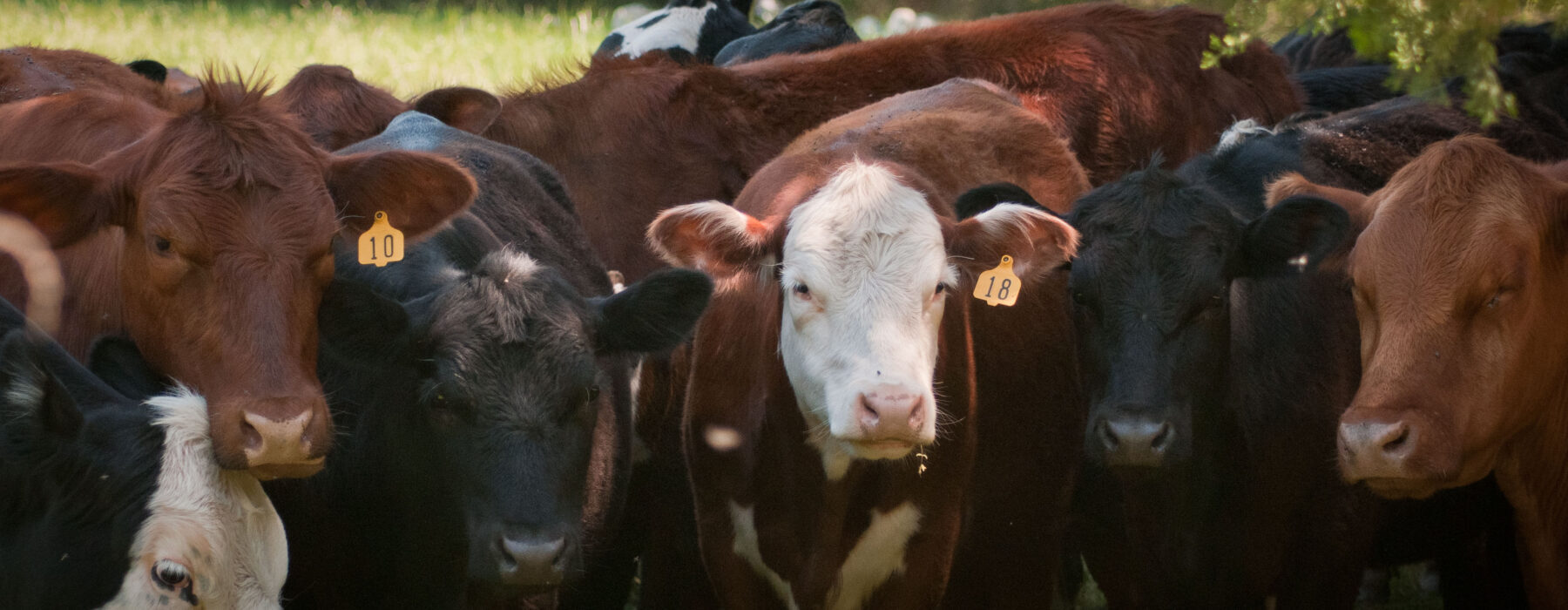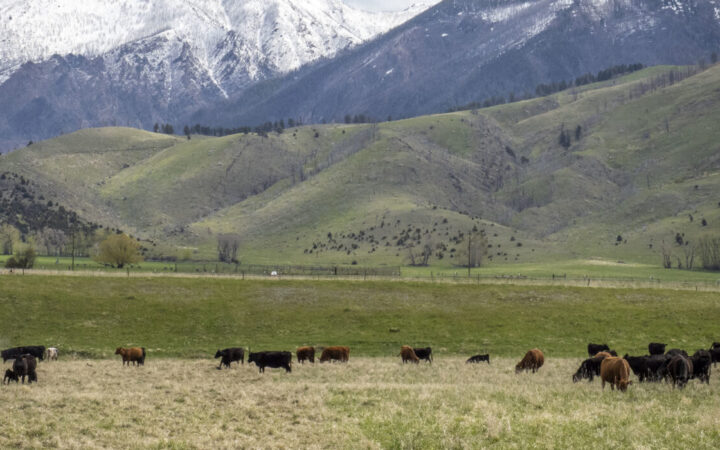This issue brief provides an overview of the federal and state policy landscape for meat inspections as they relate to on-farm slaughter practices and outlines policy considerations.
Introduction
The global meat industry plays a significant role in the lives of most Americans. The remarkable speed of this system quickly moves animals from farms to slaughterhouses to retailers and other points of sale where meat is typically available at a low price to consumers, despite its high production costs and negative externalities. In recent months and years, even as large meatpackers take advantage of market conditions to grow their profits, higher meat prices still fail to account for the true costs of production. By externalizing these costs, the industry has fostered economies of scale to meet high global consumer demand. Yet, the COVID-19 pandemic exposed the weaknesses and massive problems that result from tight, consolidated control over food and agriculture systems, including the meat industry. The consolidation that creates the efficiencies to which Americans have grown accustomed often results in less resilience, leaving meat supply chains vulnerable to shocks and compromising the integrity and reliability of our globalized food system.
In the US, outbreaks of COVID-19 among slaughterhouse and processing plant employees in combination with pandemic response protocols led to widespread temporary plant closures, thousands of ill employees, massive delays in production, and soaring prices for available meat products. This sequence of events forced meat supply chains to transition products typically destined for restaurants toward grocers and led many consumers and institutional buyers to local and regional livestock farmers and meat producers. However, due to the decades-long centralization of the meat industry, processing infrastructure available to small meat producers is significantly limited, with more than 1,800 livestock slaughterhouses closed since 1990. In the face of a new surge in demand paired with insufficient infrastructure, local and regional meat sales drastically increased while livestock farmers experienced unprecedented wait times for slaughter appointments, sometimes waiting up to 12 months or more.
Since the height of the pandemic in 2020, the US federal government has shown increased interest in investing in and building more resilient regional food systems across the country. In a 2022 press release, the Biden Administration explicitly acknowledged that supporting local food production is necessary to provide greater resilience to the food system. Since President Biden took office, the United States Department of Agriculture (USDA) has earmarked hundreds of millions of dollars in funding to build greater local supply chain resilience, including within the meat industry. Similarly, states are investing in building meat and poultry supply chain resilience. In Wisconsin, for example, the governor’s office invested millions of dollars in expanding meat processing infrastructure and capacity via the Meat and Poultry Supply Chain Resiliency Grant Program in an effort to improve “long-term viability of the state’s livestock industry,” recognizing meat processors as a “key component of a resilient supply chain.”
Even with increased investment in food system resilience, existing meat inspection laws simply do not translate well to small operations. However, small livestock farmers across the US have adapted to this system through a long tradition of selling animals or animal shares (portions of a live animal divided and distributed among multiple people) and supporting on-farm slaughter services to provide their communities with direct access to affordable, local, humane, and culturally relevant meat. At the same time, there is a parallel public interest in purchasing this type of meat because it directly supports small farmers’ financial well-being, advances animal welfare, and promotes environmental protection.
What is on-farm slaughter and why does it matter?
Slaughtering animals on the farm where they are raised reduces the need for a farmer to travel long and costly distances and can promote animal welfare and overall meat quality. While meat quality depends on a variety of factors, research shows that an animal’s pre-slaughter experience, such as traveling long distances and moving through an industrialized processing plant, negatively impacts the quality and freshness of meat due to higher levels of stress hormones present in the animal’s body at the time of slaughter. Further, reducing these stresses by slaughtering animals on-farm can result in a more humane and ethical meat product.
Critically, localizing slaughter services can prevent processing bottlenecks in the meat supply chain, mitigate unexpected delays, and ease the burden on small-scale livestock farmers bringing their livestock to market. For example, if a slaughter appointment is postponed or canceled, farmers must contend with the fact that they may miss the optimal window of time for slaughter in the animal’s life, expend the additional costs associated with keeping their livestock longer than expected, and be available on short notice to travel for a slaughter appointment opening.
On-farm slaughter is also a matter of food sovereignty because those participating in a local, small-scale livestock and meat supply chain have choice and agency over how animals are raised, slaughtered, processed, and sold. Consequently, allowing on-farm slaughter raises the same concerns as other food sovereignty issues—such as land access or seed saving—rooted in the concept of local and individual control over how a food system functions from production and harvest to processing and distribution to consumption.
What is the current legal status of on-farm slaughter?
In 2018, USDA’s Food Safety and Inspection Service (FSIS)—the federal agency responsible for ensuring humane animal handling and the safety of meat products—released guidance on the “personal use exemption” included in the Federal Meat Inspection Act (FMIA), which explicitly allows livestock owners to have their animals slaughtered with no inspection by FSIS. Although this guidance has been interpreted by states and advocates to allow for on-farm slaughter performed by hired third-party agents, some consider the guidance inconsistent with other FSIS interpretations of the FMIA. This has led to confusion among farmers, on-farm slaughter practitioners, policymakers, and agency officials. Further inconsistent interpretations at the state level threatens the livelihoods of on-farm slaughter practitioners due to changing guidance.
Based on the FMIA’s statutory language and guidance published by FSIS in 2018, 29 states operate their own Meat and Poultry Inspection (MPI) programs with functions and requirements “at least equal to” federal regulations, including the personal use exemption that allows for on-farm slaughter. Additionally, 8 states have enacted laws providing additional support for on-farm slaughter practices: Arizona, Illinois, Montana, Oregon, Rhode Island, South Carolina, Vermont, and Wisconsin.
Critically, the FMIA does not include the language “on-farm slaughter,” nor does it elaborate on the full scope of the exemptions covered. This has led to multiple interpretations and ongoing debate among FSIS, equivalent state officials, and on-farm slaughter advocates over the meaning of the exemptions—specifically, how these exemptions do or should apply to on-farm slaughter. Some advocates have called for clarifying language to confirm the legality of state laws providing for on-farm slaughter that are based on this federal exemption. This clarification would explicitly allow livestock owners to employ an itinerant slaughterer—an agent who travels from farm to farm—to slaughter their livestock on the farms where the livestock were raised without an inspected slaughter facility. Livestock owners would then have access to their meat without state or federal meat inspection. The amended language would ensure that people who rely on the personal use exemption, including farmers selling livestock for on-farm slaughter, itinerant slaughterers, and custom processors, are not vulnerable to potential policy changes. Removing this vulnerability is crucial given that agencies can easily change guidance documents without a significant amount of process or public comment.
Evoking food sovereignty tenets, on-farm slaughter practitioners and advocates across the country name supply chain transparency, local connection to community, agricultural literacy, scale-appropriate solutions, protection against changing administrations, preservation of heritage practices, ethical treatment of animals, and increased viable business avenues for small-scale livestock farmers as reasons to support clarification of the FMIA’s statutory language and protect the personal use exemption.
Acknowledgements
This brief was produced by the Center for Agriculture and Food Systems (CAFS) at Vermont Law and Graduate School with support from the USDA National Agricultural Library. Contributors to this brief from CAFS include Sophia Kruszewski, Lihlani Nelson, and Emily Spiegel. CAFS thanks Caroline Gordon, Legislative Director, Rural Vermont, for reviewing the brief and providing edits and feedback.
Suggested Citation
Jenileigh Harris & Shaune Hickson, Vt. L. & Grad. Sch. Ctr. for Agric. and Food Sys., Building Resilient Local Meat Supply Chains: How On-Farm Slaughter Fits into the Federal Inspection Act (2023), https://www.vermontlaw.edu/sites/default/files/2023-05/On-Farm-Slaughter-May2023.pdf.




